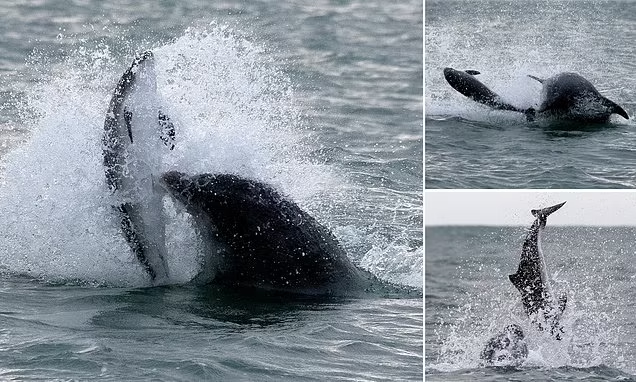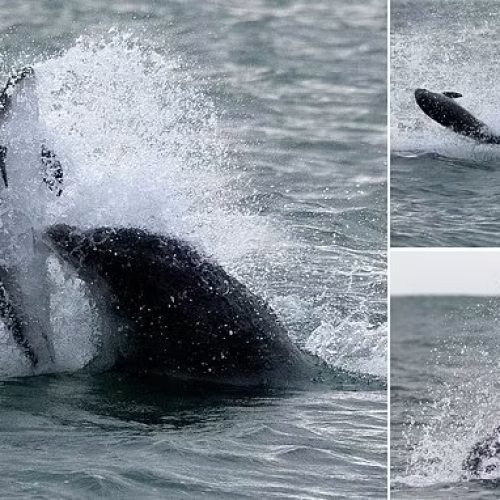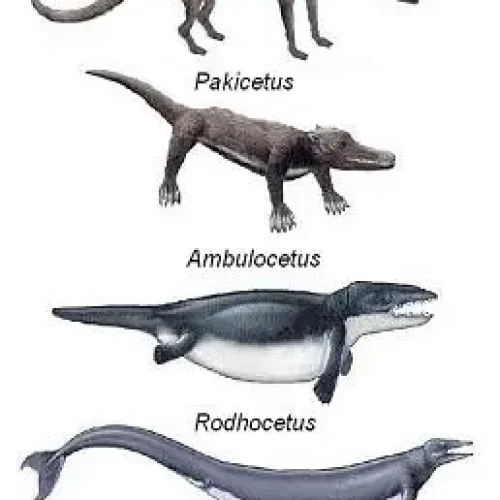In this article
THE FASCINATING WORLD OF DOLPHIN COMMUNICATION
Beneath the waves, a complex language unfolds, one that has captivated researchers and marine enthusiasts alike.
Dolphins, known for their intelligence and social nature, possess a sophisticated communication system that goes far beyond simple squeaks and clicks.
Recent studies have shed light on the intricacies of their vocal repertoire, revealing a level of complexity that rivals human language in many ways.
Vocal repertoire of dolphins
Dolphins are masters of sound production, utilizing a diverse array of vocalizations to convey information, express emotions, and navigate their underwater world. Their vocal repertoire includes:
• Whistles: These frequency-modulated sounds play a crucial role in social interactions.
• Clicks: Short, broadband pulses used primarily for echolocation.
• Burst-pulsed sounds: Rapid sequences of clicks that may convey emotional states.
Perhaps most intriguingly, dolphins use “signature whistles” – unique acoustic patterns that function similarly to names in human society. Each dolphin develops its own signature whistle early in life, which remains relatively stable throughout its lifetime.
These whistles serve as individual identifiers, allowing dolphins to recognize and call out to specific pod members even in murky waters or over long distances.
“Perhaps most intriguingly, dolphins use ‘signature whistles’. Each dolphin develops its own signature whistle early in life, which remains relatively stable throughout its lifetime.”
Types of sounds dolphins produce
The range of sounds produced by dolphins is truly remarkable. Low-frequency vocalizations can travel for kilometers underwater, while high-frequency clicks are used for precise echolocation.
Some of the most common types include:
1. Social whistles: Used for maintaining group cohesion and expressing emotions.
2. Echolocation clicks: Rapid pulses emitted to create a sonic picture of their environment.
3. Burst-pulse sounds: Often associated with aggression or excitement.
4. Pop sounds: Sharp, loud noises that may serve as warning signals.
Researchers have recorded over 1,000 distinct whistle types in some dolphin populations, highlighting the complexity of their vocal communication.
This diversity allows dolphins to convey a wide range of information, from alerting others to nearby food sources to coordinating group behaviors during hunting.

How dolphins use echolocation
While not strictly a form of communication, echolocation is a vital aspect of dolphin sensory perception that complements their vocal abilities.
By emitting high-frequency clicks and listening to the returning echoes, dolphins create detailed mental images of their surroundings. This remarkable ability allows them to:
• Locate prey with pinpoint accuracy
• Navigate through complex underwater environments
• Identify objects and other marine life from a distance
Echolocation also plays a role in social interactions.
Dolphins can use their echolocation abilities to assess the internal state of other individuals, potentially detecting pregnancies or illnesses in pod mates. This sensory integration demonstrates the intricate link between dolphin communication and perception.
As research in this field continues to advance, we are gaining a deeper understanding of the nuanced ways in which dolphins interact with their environment and each other.
The secret language of dolphins, once hidden beneath the waves, is slowly revealing itself to us, offering fascinating insights into the cognitive capabilities of these remarkable marine mammals.
DO DOLPHINS HAVE NAMES FOR EACH OTHER?
Diving into the intricate world of dolphin communication reveals a symphony of clicks, whistles, and pulsed sounds that have long fascinated marine biologists and linguists alike.
The complexity of dolphin vocalizations goes far beyond simple animal calls, hinting at a sophisticated system of information exchange beneath the waves.
Dolphins produce an astonishing array of sounds, each serving a unique purpose. Their repertoire includes:
• Echolocation clicks for navigation and hunting
• Burst-pulse sounds for social interaction
• Signature whistles for individual identification
This diverse vocal palette allows dolphins to convey a wide range of information, from the location of food sources to emotional states.
However, the sheer variety and nuance of these sounds present significant challenges for researchers attempting to decipher the dolphin code.
Interpreting dolphin communication
One of the primary hurdles in understanding dolphin “speech” is the vast difference between their auditory world and ours.
Dolphins can produce and perceive sounds far beyond the range of human hearing, utilizing frequencies up to 150 kHz.
This ultrasonic capability means that much of their communication occurs in a realm imperceptible to human ears without specialized equipment.
Moreover, the aquatic environment adds another layer of complexity.
Sound travels differently underwater, with factors like temperature, salinity, and depth affecting how acoustic signals propagate. This makes it challenging to isolate and analyze specific vocalizations in their natural habitat.
Despite these obstacles, recent years have seen remarkable breakthroughs in our understanding of dolphin communication.
Advanced recording technologies and machine learning algorithms have allowed researchers to capture and analyze dolphin vocalizations with unprecedented clarity and detail.
Unraveling the dolphin dialect
One of the most exciting developments in dolphin language research came from a team of scientists working in the Florida Keys.
Using artificial intelligence to process vast amounts of dolphin audio data, they identified patterns that suggest dolphins may use grammar-like structures in their communication.
This discovery hints at a level of linguistic sophistication previously thought to be unique to humans.
While it’s premature to claim that dolphins have a language as complex as ours, these findings open up new avenues for exploring the cognitive abilities of these remarkable marine mammals.
Another fascinating area of research focuses on the emotional content of dolphin vocalizations.
Studies have shown that dolphins produce distinct sounds when experiencing positive emotions, such as during play or social bonding.
These findings suggest that dolphin communication goes beyond mere information exchange, encompassing emotional expression as well.
As our understanding of dolphin communication grows, so too does our appreciation for the intelligence and social complexity of these creatures.
The ongoing research into their “secret language” not only sheds light on dolphin behavior but also challenges our preconceptions about animal cognition and the nature of language itself.
While we may never fully decipher the intricacies of dolphin communication, each new discovery brings us closer to understanding these enigmatic marine mammals.
As we continue to explore the depths of dolphin language, we’re reminded of the rich tapestry of intelligence that exists in the animal kingdom, inviting us to reconsider our place in the natural world.
DECODING THE DOLPHIN LANGUAGE
The enigmatic world of dolphin communication continues to fascinate marine biologists and linguists alike.
As we delve deeper into the intricate vocalizations of these intelligent cetaceans, we uncover layers of complexity that challenge our understanding of animal communication.
Recent advancements in technology and research methodologies have brought us closer than ever to deciphering the nuances of dolphin “speech,” yet significant hurdles remain in fully grasping their language.
Complexity of dolphin vocalizations
Dolphin vocalizations are far from simple.
Their acoustic repertoire includes an astonishing array of whistles, clicks, and pulsed sounds, each serving distinct purposes. What sets dolphin communication apart is its contextual flexibility and apparent grammatical structure.
• Frequency modulation: Dolphins can rapidly alter the pitch and tone of their whistles, creating complex patterns.
• Layered vocalizations: They often produce multiple sounds simultaneously, akin to human speech.
• Dialectal variations: Different pods may develop unique “accents” or vocal patterns.
Research suggests that dolphins can produce up to 1000 distinct whistle types, with some studies indicating they may even create novel sounds on the spot.
This level of vocal dexterity hints at a communication system that goes beyond simple signalling, potentially approaching the complexity of human language.
Challenges in interpreting dolphin communication
Despite significant progress, scientists face numerous obstacles in decoding dolphin language:
1. Underwater acoustics: Sound travels differently in water, complicating our ability to accurately record and analyze vocalizations.
2. Contextual understanding: Interpreting the meaning of sounds without fully grasping the situational context is challenging.
3. Non-vocal communication: Dolphins also use body language and touch, which are difficult to correlate with vocalizations in research settings.
4. Cognitive differences: The dolphin brain, while highly developed, is structured differently from ours, potentially leading to fundamentally different ways of processing and producing language.
Moreover, the ethical considerations of invasive research methods limit our ability to conduct certain types of studies that might yield more definitive results.
This delicate balance between scientific inquiry and animal welfare adds another layer of complexity to the research process.
Recent breakthroughs in understanding dolphin “speech”
Despite these challenges, recent years have seen exciting advancements in our understanding of dolphin communication:
• Artificial intelligence analysis: Machine learning algorithms are helping to identify patterns in dolphin vocalizations that human researchers might miss.
• Signature whistle research: Studies have confirmed that dolphins use unique “name-like” whistles to identify and call out to specific individuals.
• Two-way communication attempts: Researchers have made progress in creating devices that can play back dolphin-like sounds, potentially opening the door for rudimentary two-way communication.
The field of dolphin communication research is at an exciting juncture. As we continue to refine our methods and technologies, we edge closer to unravelling the mysteries of dolphin language.
While a complete “translation” of dolphin speech remains a distant goal, each breakthrough brings us a step closer to understanding these remarkable marine mammals and their sophisticated means of communication.








